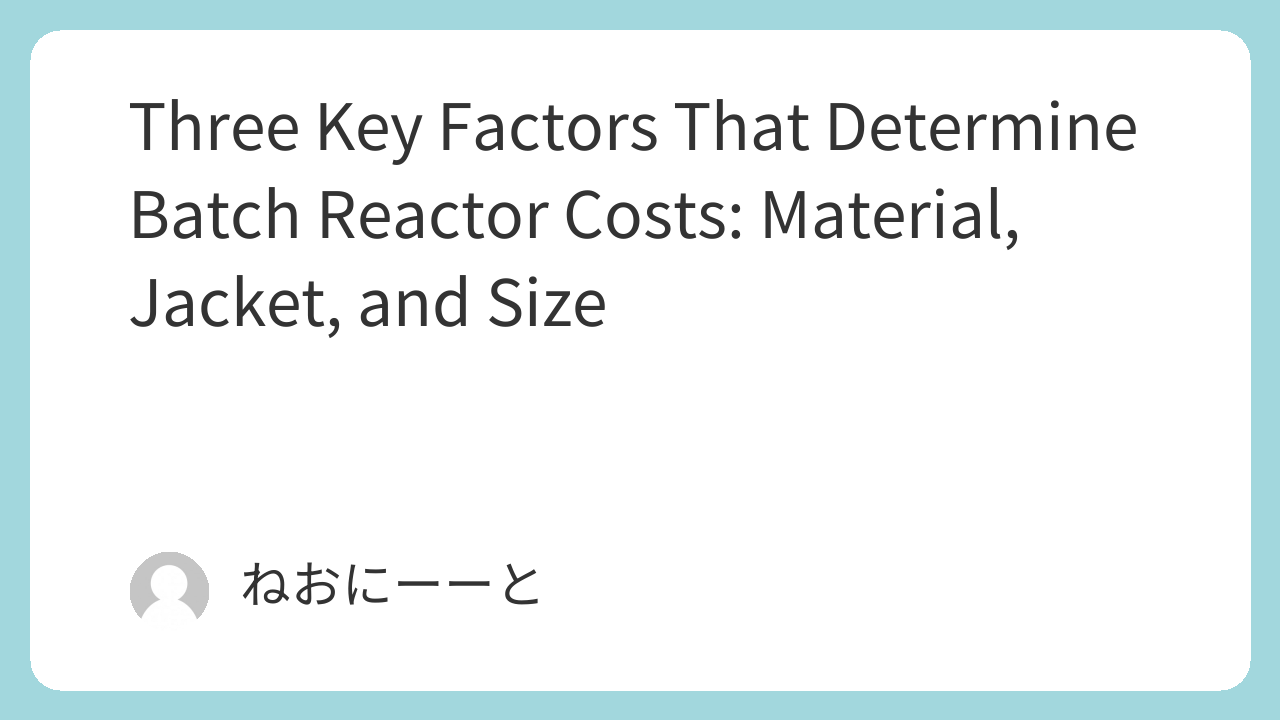In batch operations, reactors are often the core equipment that defines plant capacity—and even a company’s production capability.
Understanding how much a reactor costs is essential for planning investments or building new batch plants.
This article explains how the cost of a batch reactor changes depending on material, jacket configuration, and size.
While the actual price depends on conditions, vendors, and market trends, this guide provides a realistic sense of relative cost differences.
1. Cost Differences by Material
The reactor’s material has a major impact on cost since these vessels consume large amounts of metal.
Here’s a simplified cost ratio (using glass-lined reactors as the baseline = 1):
| Material | Relative Cost |
|---|---|
| Carbon steel | 0.5 |
| Glass-lined steel | 1 |
| Stainless steel | 3 |
| Hastelloy | 10 |
- Carbon steel is cheaper mainly because it doesn’t require a glass lining process, though it’s rarely used for chemical reactions today.
- Stainless steel can cost around 3× more than glass-lined types, due to both material and fabrication costs.
- Hastelloy is about 10× higher, driven largely by material price rather than manufacturing complexity.
⚙️ Note: Even if stainless or Hastelloy materials seem similar in fabrication effort, the raw material price makes a huge difference.
2. Jacket vs. Non-Jacketed Reactors
Reactors may or may not include a heating/cooling jacket.
At standard pressure ranges (below 1 MPa), the cost ratio is roughly 1 : 1.5 for non-jacketed vs. jacketed vessels.
This difference arises not just from the extra jacket itself but also from the increased shell thickness required for supporting top-mounted agitators and manholes.
Even a “simple” reactor needs sufficient wall thickness for structural integrity.
3. Effect of Reactor Size
Reactor cost doesn’t increase linearly with size—it follows the 0.6 power law:
- Below 10 m³ → scaling effect is minimal
- Above 10 m³ → noticeable economy of scale
In small reactors, the 0.6 power rule often underestimates the real cost.
Even small units can be surprisingly expensive due to fixed fabrication and handling costs.
Summary
To estimate batch reactor costs, consider three main factors:
1️⃣ Material – from carbon steel to Hastelloy, prices can vary up to 10×
2️⃣ Jacket configuration – adding a jacket increases cost by about 1.5×
3️⃣ Size – larger reactors follow the 0.6 power scaling rule, but small ones don’t benefit much
Understanding these relationships gives engineers and planners a practical sense of reactor investment costs—well before formal quotations.

Comments